Explore the New Grand Egyptian Museum: A Guide to the World's Largest Museum of Egyptian Antiquities
Egypt is one of the most fascinating destinations in the world, with its ancient treasures, spectacular pyramids, and mesmerizing culture. There is no one more exciting reason to plan a trip to this incredible country: the opening of the Grand Egyptian Museum. This is the world's largest museum of Egyptian antiquities, and it promises to be a must-visit attraction for tourists and history buffs alike.
If you are planning a trip to Egypt, or want to discover more about this stunning museum, read on to learn everything you need about the Grand Egyptian Museum.

Opening of the Grand Egyptian Museum in 2023
The opening of the Grand Egyptian Museum in 2023 is an exciting event that visitors worldwide eagerly await. This magnificent museum will showcase Egypt's rich history and culture, housing the world's largest collection of Egyptian antiquities. Here are some key highlights and information about the grand opening:
• The Grand Egyptian Museum is located near the Giza Pyramids, adding to the allure of this iconic archaeological site.
• The museum is designed to become a centre for cultural tourism, inviting visitors to explore the wonders of ancient Egypt.
• It will house over 100,000 artefacts, including the famous treasures of King Tutankhamun. This collection alone is reason enough to visit the museum, as it offers a rare glimpse into the life of one of Egypt's most famous pharaohs.• In addition to King Tut's treasures, the museum will also showcase the Solar boat of Khufu, statues of pharaohs and Egyptian gods, and even royal mummies, enabling visitors to immerse themselves in Egypt's captivating history.• The museum's architectural design is a marvel, blending modernity with traditional Egyptian motifs. It is designed to provide visitors an enchanting and immersive experience, with spacious galleries and exhibition areas.• With several dining options and gift boutiques, visitors can take a break while exploring the museum and indulge in some traditional Egyptian cuisine or find a unique souvenir to take home.• Accessibility from resort areas and the nearby airport is also convenient, allowing visitors to easily make their way to the museum and explore the wonders it holds.
Overall, the opening of the Grand Egyptian Museum in 2023 promises to be a remarkable event, offering visitors a chance to immerse themselves in the ancient wonders of Egypt truly.
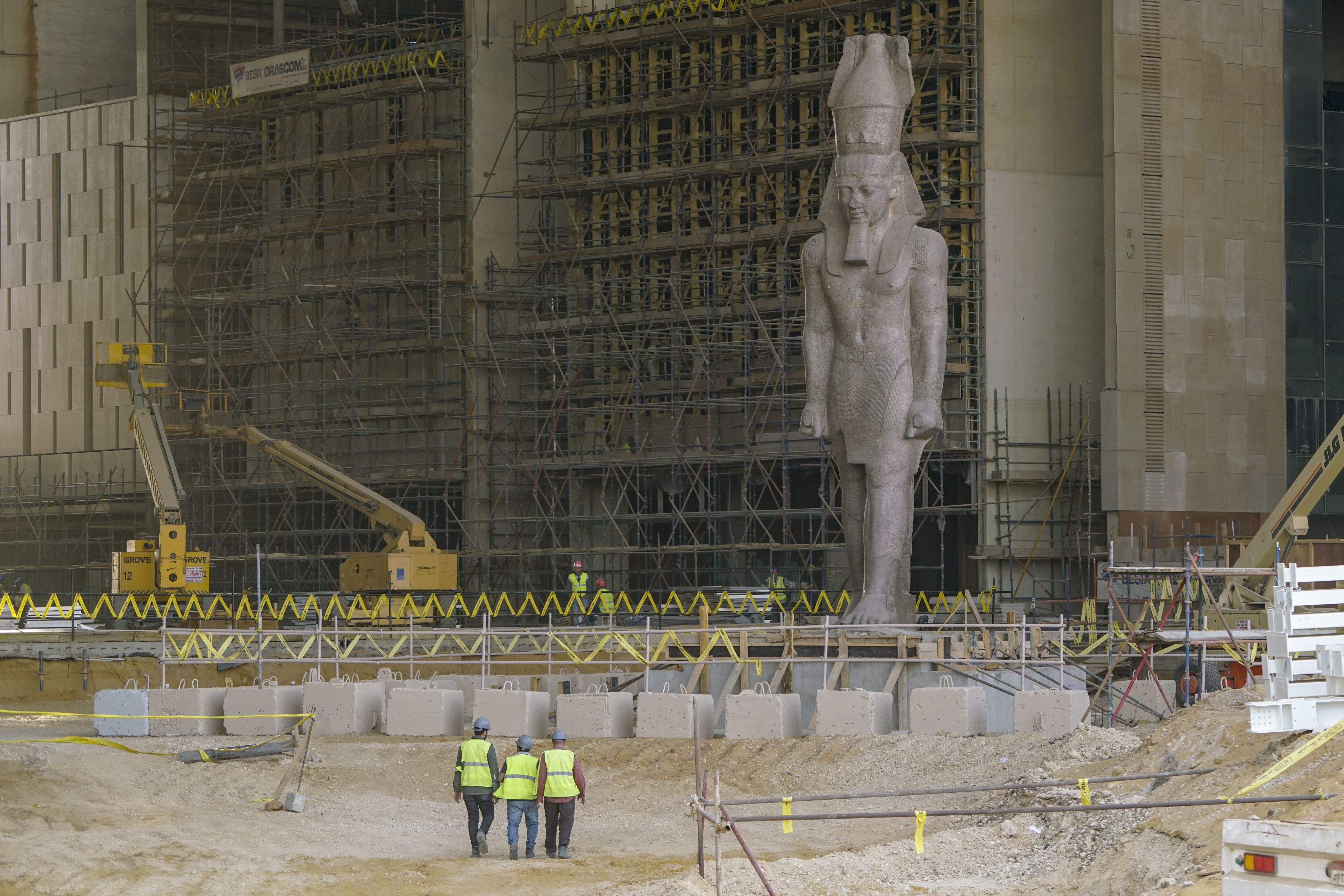
Importance of the Museum in Egypt
The Grand Egyptian Museum holds immense significance for Egypt, serving as a crucial hub for its rich cultural heritage and tourism industry. Let's explore why this museum is so important:
-
Preservation of Egyptian Antiquities: The museum aims to preserve and showcase Egypt's vast collection of ancient artefacts, including those from the tomb of Tutankhamun. Providing a state-of-the-art facility ensures the conservation and protection of these precious items for generations to come.
-
Promoting Tourism: As the world's largest museum of Egyptian antiquities, the Grand Egyptian Museum is set to become a major attraction, drawing visitors from all corners of the globe. Its proximity to the iconic Giza Pyramids will undoubtedly augment its appeal, boosting tourism and contributing to the country's economy.
-
Education and Research: The museum will serve as a centre for education and research, facilitating scholarly pursuits and fostering a deeper understanding of Egypt's rich history and culture. It will provide a platform for archaeological studies and educational programs for students and enthusiasts.
-
National Pride: The establishment of the Grand Egyptian Museum reinforces Egypt's pride in its ancient heritage. It becomes a symbolic representation of the nation's identity and serves as a source of inspiration for Egyptians, asserting their historical legacy on the global stage.
With its rich collection of artefacts, educational initiatives, and tourist appeal, the Grand Egyptian Museum holds tremendous importance for Egypt's cultural heritage and national identity. The opening of this grand institution in 2023 signals a significant milestone in the country's efforts to preserve and showcase its ancient treasures.
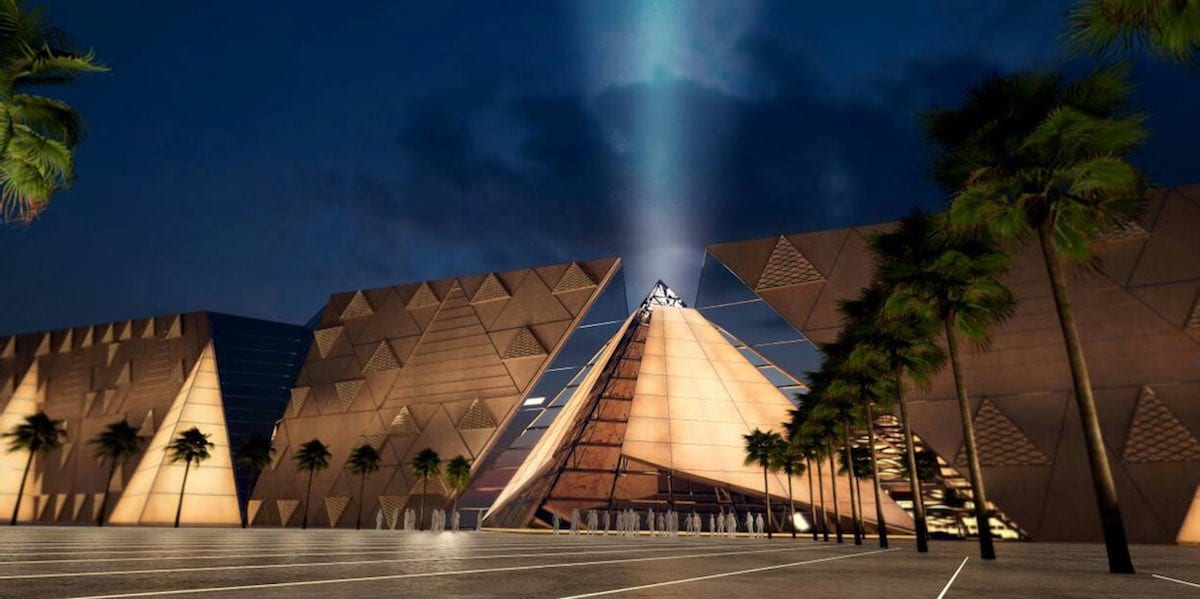
Design and Construction of the Grand Egyptian Museum
Unique construction challenge of the Giza Plateau
Did you know that the construction of the Grand Egyptian Museum posed several unique challenges? Situated on the Giza Plateau, the museum had to be built near the iconic pyramids and the Sphinx. Here are some fascinating aspects regarding the construction of this magnificent museum:
-
Preservation of the ancient landscape: One key challenge was ensuring minimal disturbance to the sensitive archaeological landscape. Extensive measures were taken to protect the surrounding areas and prevent damage to significant historical sites.
-
Accommodating the massive collection: The museum required ample space to house the world's largest collection of Egyptian antiquities. The challenge was to provide enough floor area without encroaching on the nearby protected areas.
-
Balancing tradition and modernity: The museum's architectural design aimed to strike a balance between modernity and respecting Egypt's rich cultural heritage. The challenge was to create a visually appealing structure that blends seamlessly with the existing monuments.
-
Addressing logistical hurdles: Construction materials and equipment had to be transported to the site, which involved navigating through narrow roads and the crowded city of Cairo. Overcoming these logistical hurdles required careful planning and coordination.
Despite these unique challenges, the construction of the Grand Egyptian Museum stands as a testament to human ingenuity and determination. It promises to be a remarkable addition to Egypt's cultural landscape, offering a captivating journey through ancient history.
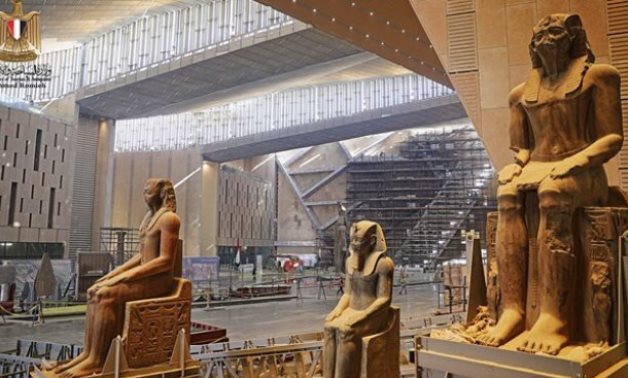
Features of the architectural design
When visiting the Grand Egyptian Museum, you'll be captivated not only by the incredible collection of Egyptian antiquities but also by the architectural design of the building itself. The museum's design is a harmonious blend of modernity and ancient Egyptian elements, creating a visually stunning experience for visitors. Here are some noteworthy features of its architectural design:
-
Immersive Design: The museum immerses visitors in Egypt's rich history and culture. The exterior resembles a contemporary pyramid, paying homage to the iconic pyramids of Giza while incorporating modern materials and techniques.
-
Natural Lighting: The museum is flooded with natural light, thanks to its expansive glass facades and skylights. This creates a bright and inviting atmosphere and helps preserve the artefacts by reducing the need for artificial lighting.
-
Spacious Galleries: The museum boasts vast gallery spaces that can accommodate many artefacts. These spacious areas allow visitors to explore the collection comfortably, making for an enjoyable experience.
-
Interactive Exhibits: The architectural design seamlessly integrates interactive elements throughout the museum. Visitors can engage with multimedia installations, touch-screen displays, and immersive audio-visual presentations, enhancing their understanding and appreciation of the exhibits.
-
Sustainable Features: The museum incorporates sustainable design principles to minimize its environmental impact. From energy-efficient lighting systems to water-saving measures, it strives to be an eco-friendly institution.
The architectural design of the Grand Egyptian Museum not only serves as a fitting backdrop for the incredible collection of artefacts and adds to the overall experience by immersing visitors in Egypt's ancient heritage. With its stunning design and innovative features, this museum promises to be a must-visit destination for history and architecture enthusiasts alike.
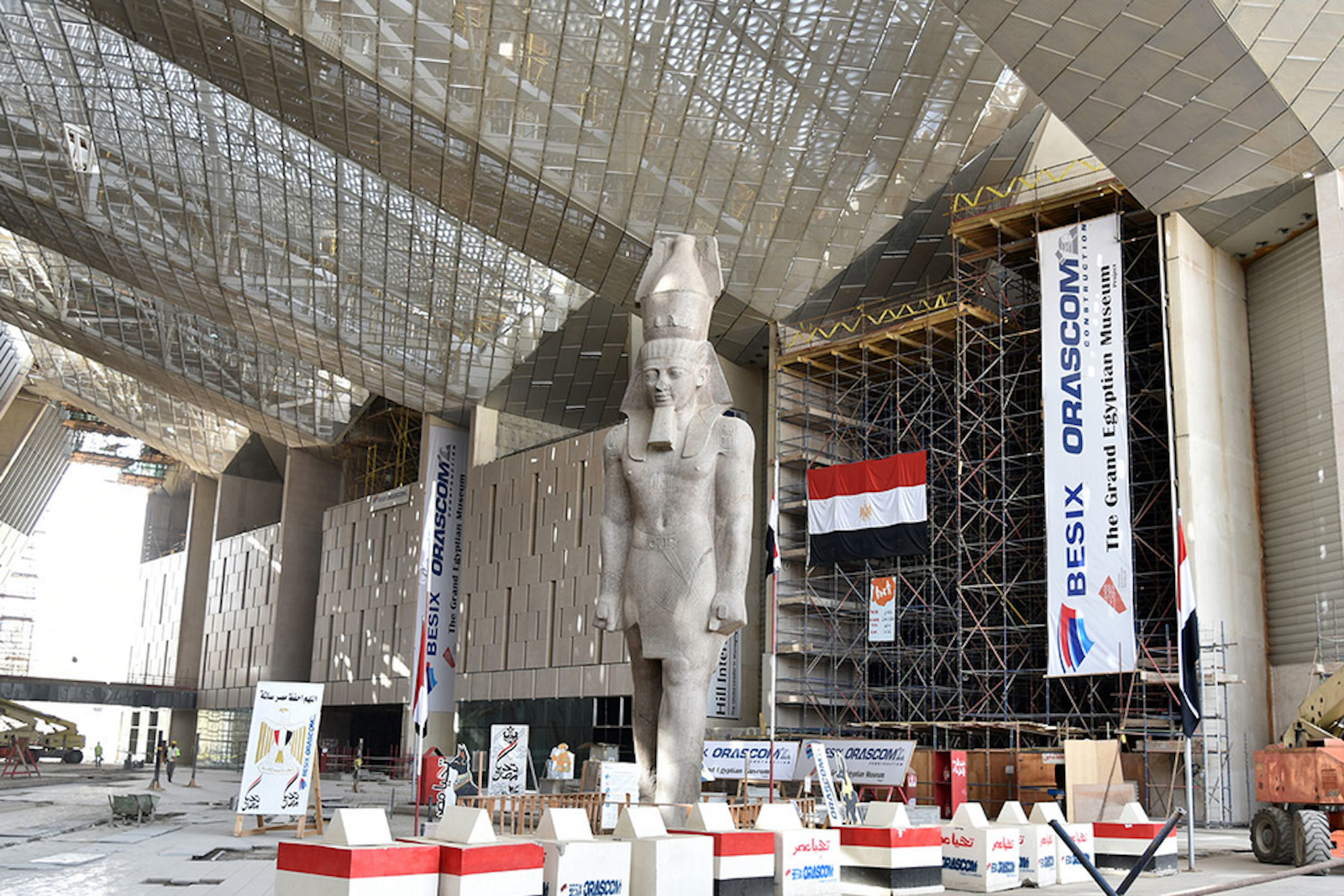
Construction costs and delays
The construction of the Grand Egyptian Museum has been a monumental undertaking in terms of costs and delays. The project has faced several challenges, but it is poised to become the world's largest museum of Egyptian antiquities. Here are some important points regarding the construction costs and delays:
-
Costs: The museum's construction has come with a hefty price tag. Initial estimates put the cost at around $550 million, which will likely surpass that figure. The funding for the project has mainly come from the Egyptian government, with contributions from international organizations and donors.
-
Delays: The museum's opening has faced numerous delays since its inception. Originally scheduled to open in 2012, the project has faced setbacks due to financial constraints and political instability in Egypt. However, the latest target date for the opening is 2023, and efforts are being made to ensure this deadline is met.
-
Unique Construction Challenge: One of the major challenges faced during the construction was the unique nature of the Giza Plateau. The museum is located adjacent to the Pyramids of Giza and had to be built in harmony with the archaeological and historical context of the area. Special care was taken to preserve the surrounding landscape and the dignity of the ancient monuments.
-
Architectural Design: The museum's architectural design is a marvel in itself. The building features a modern, sleek design with a translucent facade that allows natural light to illuminate the galleries. The design incorporates sustainable features, such as solar panels and energy-efficient systems, to minimize the environmental impact of the museum.
Despite the construction costs and delays, the Grand Egyptian Museum promises to be a magnificent cultural institution that will showcase the rich heritage of Egypt. Visitors can look forward to a world-class experience, surrounded by awe-inspiring artefacts and exhibits that tell the story of ancient Egypt.

Overview of the Grand Egyptian Museum
Size and floor space of the museum
The Grand Egyptian Museum, due to open in 2023, is a monumental project in terms of its significance, size, and floor space.
This colossal structure covers a sprawling area on the Giza Plateau, providing ample room to house the world’s largest collection of Egyptian antiquities. With over 480,000 square metres of floor space, the museum has an impressive capacity to display thousands of artefacts, offering visitors an immersive and comprehensive experience.
The sheer size of the museum allows for grand exhibits and spacious galleries, ensuring that each piece gets its rightful place of prominence. The museum's floor plan is designed with careful thought given to the flow of visitors and maximising their exploration. With multiple levels, visitors can seamlessly navigate through the exhibits, never feeling crowded or overwhelmed.
Each floor is strategically organised, showcasing different periods of Egypt’s rich history and providing a well-rounded journey through time. The spaciousness of the museum also enables the display of larger artefacts, such as statues of pharaohs and Egyptian gods, and even the fascinating solar boat of Khufu.
In addition to its vast size, the architectural design of the Grand Egyptian Museum is an exceptional feature. The building embodies a modern take on ancient Egyptian architecture, seamlessly blending the past and the present. Its iconic triangular shape pays homage to the pyramids of Giza and adds to the overall grandeur of the structure. The museum’s unique design elements, such as the grand entrance hall and the stunning atriums, create a visual spectacle that further enhances the visitor experience.
While the museum’s construction has faced some challenges and delays, the result promises to be worth the wait. The meticulous attention to detail in preserving the artefacts, coupled with a focus on energy efficiency and sustainability, ensures that the museum showcases Egypt’s history and contributes positively to the future.
From its expansive galleries to its awe-inspiring architecture, the Grand Egyptian Museum stands ready to welcome you on a journey through the fascinating world of ancient Egypt.

Unique features of the building
One of the most fascinating aspects of the Grand Egyptian Museum is its unique architectural design. As you step foot into this massive structure, you will be captivated by its remarkable features that bring together the past and the future. Here are some of the distinctive elements that make this building truly special:
-
Light-filled atrium: The museum boasts a grand atrium adorned with a stunning skylight that allows natural light to flood. This creates a welcoming ambience and minimizes the need for artificial lighting during the day.
-
Sustainable design: The building has been designed with a strong focus on energy efficiency and sustainability. It incorporates various eco-friendly features such as solar panels, rainwater harvesting systems, and efficient insulation.
-
State-of-the-art galleries: The museum houses state-of-the-art galleries that provide an immersive and interactive experience. From multimedia displays to touchscreens and virtual reality exhibits, these galleries offer a unique way to explore the treasures of ancient Egypt.
-
Conservation laboratories: The Grand Egyptian Museum is equipped with cutting-edge conservation laboratories that ensure the proper preservation of priceless artefacts. Experts work tirelessly to restore and maintain the museum's extensive collection.
-
Outdoor amenities: Besides impressive indoor spaces, the museum offers beautiful outdoor amenities. Visitors can enjoy sprawling gardens, walkways, and even a peaceful reflection pool that adds to the overall tranquillity of the surroundings.
As you wander through the Grand Egyptian Museum, be sure to take note of these unique features that make it one of the most magnificent museums in the world.
Preservation of artefacts and energy efficiency
Preservation of artefacts and energy efficiency are two key considerations in the design and construction of the Grand Egyptian Museum. The museum aims to protect and showcase Egypt's rich cultural heritage while incorporating sustainable practices.
- Climate control: The museum utilizes advanced climate control systems to create the ideal conditions for preserving delicate artefacts. Maintaining stable temperature and humidity levels helps prevent degradation and damage.
- Lighting and displays: LED lighting and low UV-emitting lights help minimize the harmful effects of light on the artefacts. Moreover, display cases are carefully designed to limit exposure to light and reduce deterioration.
- Conservation laboratories: The museum houses state-of-the-art conservation laboratories where experts work to restore and preserve the artefacts. These facilities are equipped with the latest technologies and adhere to international museum standards.
- Renewable energy sources: The Grand Egyptian Museum incorporates renewable energy sources into its design. Solar panels are installed on the roof to generate clean energy, reducing the demand for conventional electricity.
- Sustainable materials: The museum's construction utilizes sustainable materials that minimize the environmental impact. This includes using recycled materials, responsibly sourced wood, and energy-efficient insulation.
- Efficient water management: The museum implements water-saving measures such as low-flow faucets, toilets, and irrigation systems to reduce water consumption. Rainwater collection systems are also in place to utilize natural resources efficiently.
The Grand Egyptian Museum is committed to preserving Egypt's cultural treasures while embracing sustainable practices. By incorporating state-of-the-art conservation techniques and energy-efficient solutions, the museum ensures the longevity of its artefacts while reducing its ecological footprint. Visitors can enjoy a truly immersive and environmentally conscious experience.

Must-See Exhibits at the Grand Egyptian Museum
King Tut's treasures
King Tut's treasures are among the most iconic and fascinating exhibits at the Grand Egyptian Museum. As you wander through the vast halls, you'll see a stunning collection of artefacts associated with the young pharaoh. Here are some highlights that will leave you in awe:
- The golden mask: One of the most famous objects is the intricate gold mask that adorned King Tut's mummy. Crafted with exquisite detail, it is a true masterpiece of ancient Egyptian art.
- Jewellery and amulets: King Tut was buried with a vast assortment of jewellery, including necklaces, bracelets, rings, and amulets. These precious adornments offer a glimpse into the opulence and wealth of ancient Egyptian royalty.
- Furniture and chariots: The tomb also contained beautifully carved wooden furniture and miniature chariots, providing insight into the daily life and customs of the pharaohs.
- Canopic shrine: One of the unique treasures is the canopic shrine, which holds the pharaoh's internal organs. The intricately designed shrine showcases the exceptional craftsmanship of ancient Egyptian artisans.
- Tutankhamun's chariot: Another notable artefact is the pharaoh's chariot, which was buried in his tomb. This elegantly designed chariot is a testament to the advanced engineering skills of ancient Egyptians.
Walking through the exhibit, you can't help but be amazed by the remarkable artefacts buried with the young pharaoh. It's truly a once-in-a-lifetime opportunity to witness the treasures of King Tut firsthand at the Grand Egyptian Museum.

Solar boat of Khufu
The Solar boat of Khufu is one of the fascinating attractions awaiting visitors at the grand opening of the Grand Egyptian Museum in 2023. This magnificent ancient vessel, the Khufu ship, was buried near the Great Pyramid of Giza for over 4,500 years. The boat was carefully disassembled and preserved, and now it will be displayed in all its glory at the museum. Here are some fascinating facts about the Solar boat of Khufu:
-
Construction and significance: The Solar boat of Khufu is believed to have been built during the Fourth Dynasty of the Old Kingdom of Egypt, around 2500 BCE. It was constructed using Lebanese cedarwood and measures around 44 meters in length. The boat holds great historical and religious significance, as it was intended to transport the pharaoh's soul across the sky with the sun god Ra.
-
Intricate design: The Solar boat of Khufu showcases incredible craftsmanship and attention to detail. It features intricate carvings and paintings depicting scenes of ancient Egyptian life and religious rituals. The boat's elegant and streamlined shape is a testament to the advanced shipbuilding techniques of the time.
-
Archaeological discovery: The boat was discovered in 1954 by archaeologist Kamal el-Mallakh. It was found in a pit alongside the Great Pyramid of Giza and was carefully excavated and reconstructed over several years. Now, visitors to the Grand Egyptian Museum can admire this ancient marvel up close.
-
Restoration and preservation: Extensive restoration work was carried out to ensure the preservation of the Solar boat. The boat was carefully disassembled and treated to prevent decay. It was then reassembled using modern techniques, ensuring every piece was placed in its original position.
-
Symbol of Egypt's ancient civilization: The Solar boat of Khufu represents the technological advancements and the maritime capabilities of ancient Egypt. It offers a unique glimpse into the ancient Egyptian civilization's understanding of astronomy, engineering, and their elaborate burial rituals.
The Solar boat of Khufu is just one of the many remarkable treasures that await you at the Grand Egyptian Museum. Step back in time and immerse yourself in the rich history and culture of Egypt as you explore this breathtaking museum.
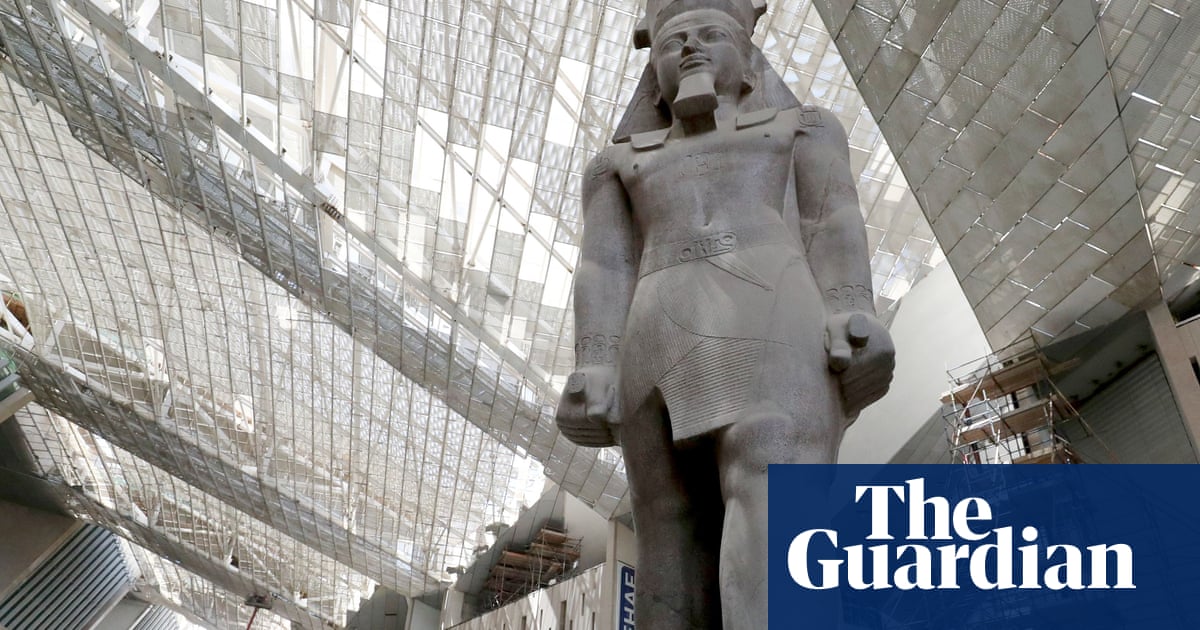
Statues of pharaohs and Egyptian gods
When you visit the Grand Egyptian Museum, one of the most captivating sights you will come across is the collection of statues depicting pharaohs and Egyptian gods. These statues offer a fascinating glimpse into ancient civilisations' beliefs and royal figures. Here's what you can expect to see:
-
Pharaoh Statues: The museum houses an impressive array of pharaoh statues from the early Dynastic period to the New Kingdom. You can marvel at the lifelike depictions of renowned pharaohs such as Ramses II, Hatshepsut, and Akhenaten. Each statue tells a story of power, divinity, and intricate details meticulously carved by ancient craftsmen.
-
Egyptian God Statues: Step into the world of Egyptian mythology as you encounter statues representing gods and goddesses. From the enigmatic eyes of the mighty Horus to the elegant figure of the goddess Isis, these statues personify the deities worshipped by the ancient Egyptians. Their presence in the museum pays homage to the deep spiritual beliefs that shaped their culture.
-
Symbolic Representations: Many of these statues represent significant events, rituals, and beliefs. For example, the statue of the god Osiris, the ruler of the afterlife, embodies resurrection and fertility. The museum provides detailed explanations to help unravel these ancient masterpieces' hidden meanings.
The statues of pharaohs and Egyptian gods at the Grand Egyptian Museum offer a remarkable opportunity to immerse yourself in Egypt's rich history and culture. Prepare to be awestruck by their majestic presence and the stories they tell of a bygone era.

Royal mummies
The Grand Egyptian Museum, set to open its doors in 2023, is the world's largest museum of Egyptian antiquities and a treasure trove of royal mummies. As you explore this incredible museum, make sure to set aside time to visit the section dedicated to the royal mummies, where you can witness firsthand the remarkable preservation of these ancient Egyptian rulers. Here's what you can expect to see:
-
Exquisite Mummification: The royal mummies exhibit showcases the art of ancient Egyptian embalming and mummification. Each mummy has been intricately preserved, giving visitors a unique insight into the rituals and beliefs of the ancient Egyptians.
-
Pharaohs in Splendor: Among the royal mummies, you'll encounter some of the most iconic pharaohs in Egyptian history, including Ramses II, Seti I, and Hatshepsut. These rulers played crucial roles in shaping Egypt's rich heritage, and their mummies tell stories of power and prestige.
-
Elaborate Burial Artifacts: Alongside the mummies, you'll also find a stunning collection of burial artefacts, ranging from funerary masks to intricately carved sarcophagi. These items offer a glimpse into the elaborate burial practices of the ancient Egyptians and provide a deeper understanding of their beliefs surrounding the afterlife.
-
The Tomb of King Tut: No visit to the royal mummies section would be complete without exploring the tomb of the boy pharaoh, Tutankhamun. Discover the preserved treasures, including his iconic golden mask, precious jewellery, and intricately designed funerary chariots.
The royal mummies section at the Grand Egyptian Museum is a testament to Egypt's rich history and cultural heritage. Prepare to be amazed by the level of preservation and the stories these ancient rulers have to tell. Don't miss the opportunity to witness this unique exhibit during your visit to the museum.

Additional Facilities and Attractions at the Grand Egyptian Museum
Restaurants and dining options
When visiting the Grand Egyptian Museum, you'll not only be enthralled by the impressive collection of Egyptian treasures, but you'll also have the opportunity to indulge in delicious dining options. The museum boasts several restaurants and cafes catering to various tastes and preferences. Whether you're looking to enjoy a quick bite or a leisurely meal, there is something for everyone. Here are some of the dining options you can explore:
-
Nile View Restaurant: Situated on the museum's top floor, this restaurant offers breathtaking panoramic views of the Nile River. You can savour a delightful mix of Egyptian and international cuisine while enjoying the stunning surroundings.
-
Egyptian Street Food Court: If you're in the mood for a casual and authentic culinary experience, head to the Egyptian Street Food Court. Here, you'll find a range of local street food delicacies, from falafel and shawarma to koshary and taameya. It's the perfect spot to dive into the local flavours and immerse yourself in the cultural vibe.
-
Oasis Café: Located amidst beautifully landscaped gardens, the Oasis Café offers a tranquil setting to relax and recharge. You can enjoy a variety of light snacks, sandwiches, and refreshing beverages while taking a break from exploring the museum.
-
Souk Souvenirs Cafe: This charming café provides a unique dining experience. Not only can you savour traditional Egyptian dishes, but you can also shop for souvenirs and handicrafts from the attached boutique. It's a great place to find a unique memento to take back home.
These dining options within the Grand Egyptian Museum ensure you can refuel and treat yourself to delicious meals during your visit. From scenic views to local street food, there's something to satisfy every craving and create lasting memories of your time at the world's largest museum of Egyptian antiquities.
| Restaurants and Dining Options |
|---|
| - Nile View Restaurant |
| - Egyptian Street Food Court |
| - Oasis Café |
| - Souk Souvenirs Cafe |

Gift boutiques and shops
When visiting the magnificent Grand Egyptian Museum, you'll have the opportunity to explore the world's largest collection of Egyptian antiquities and indulge in some delightful shopping. The museum boasts a range of gift boutiques and shops scattered throughout its premises, offering a wide array of souvenirs and mementoes for you to take home. Here's what you can expect when browsing through these charming retail spaces:
-
Authentic Egyptian crafts: Immerse yourself in the rich traditions of Egypt as you peruse the various shops featuring crafts made by local artisans. From intricately carved statues and jewellery to vibrant paintings and pottery, you can find unique treasures that showcase the country's cultural heritage.
-
Replicas of iconic artefacts: If you've been captivated by the ancient Egyptian world during your museum visit, you'll be pleased to find replicas of famous artefacts available. Take home a miniature version of the breathtaking gold mask of Tutankhamun or a replica of the Statue of Ramses II to adorn your collection.
-
Egyptology books and publications: Dive deeper into ancient Egypt's fascinating history and mythology with a selection of books and publications available at the museum's gift boutiques. Discover insightful narratives and awe-inspiring imagery that will transport you back in time.
-
Fashion and accessories: If you want to add an Egyptian touch to your wardrobe, the museum's shops offer a selection of clothing items, scarves, and accessories inspired by Egyptian motifs. You'll find stylish pieces that elevate any outfit, from scarab beetle pendants to hieroglyphic-patterned scarves.
-
Local culinary delights: Don't miss the opportunity to sample some of Egypt's delectable treats. Many gift boutiques feature a range of spice blends, teas, and traditional sweets for you to savour and take back home, allowing you to continue your Egyptian culinary adventure long after your visit.
The Grand Egyptian Museum's gift boutiques and shops provide an excellent opportunity to bring a piece of Egypt's rich history and culture back home with you. Whether you're searching for authentic crafts, educational publications, fashionable accessories, or culinary delights, you'll find a delightful selection that caters to various tastes and interests.
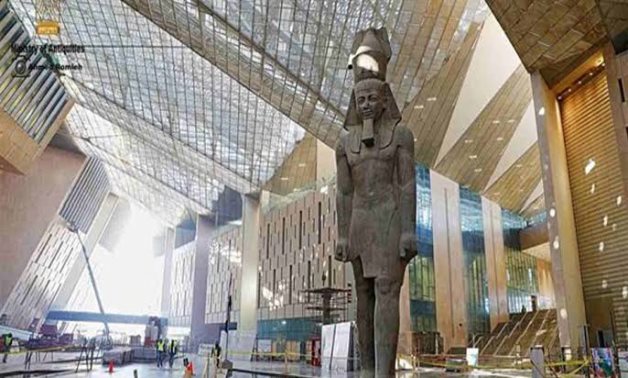
Accessibility from resort areas and nearby airport
If you plan to visit the Grand Egyptian Museum, you'll be pleased to know that it is conveniently accessible from resort areas and the nearby airport. Here are some details to help you plan your trip:
-
Transportation options:
- Taxis: Taxis are available from most resort areas and offer a convenient and relatively quick way to reach the museum. It's recommended to negotiate the fare before getting into the taxi.
- Shuttle services: Many resorts offer shuttle services to popular tourist attractions, including the Grand Egyptian Museum. These services can be more cost-effective and hassle-free, especially for larger groups.
-
Distance from Cairo International Airport:
- The Grand Egyptian Museum is just 15 kilometres (9 miles) from Cairo International Airport. This proximity makes it easily accessible for both domestic and international travellers.
-
Public transportation:
- Cairo has an extensive public transportation system, including buses and trains. While these options may be more time-consuming than taxis or shuttles, they can be a more budget-friendly choice for those who prefer public transportation.
-
Tour packages:
- Many tour operators and travel agencies offer packages that include transportation to the Grand Egyptian Museum. These packages often include guided tours and transportation from resort areas, providing a hassle-free experience for visitors.
Whether you choose to take a taxi, shuttle, or public transportation, or opt for a tour package, rest assured that reaching the Grand Egyptian Museum from resort areas and the nearby airport is relatively convenient. Plan your visit and explore the wonders of ancient Egypt at this magnificent museum.
